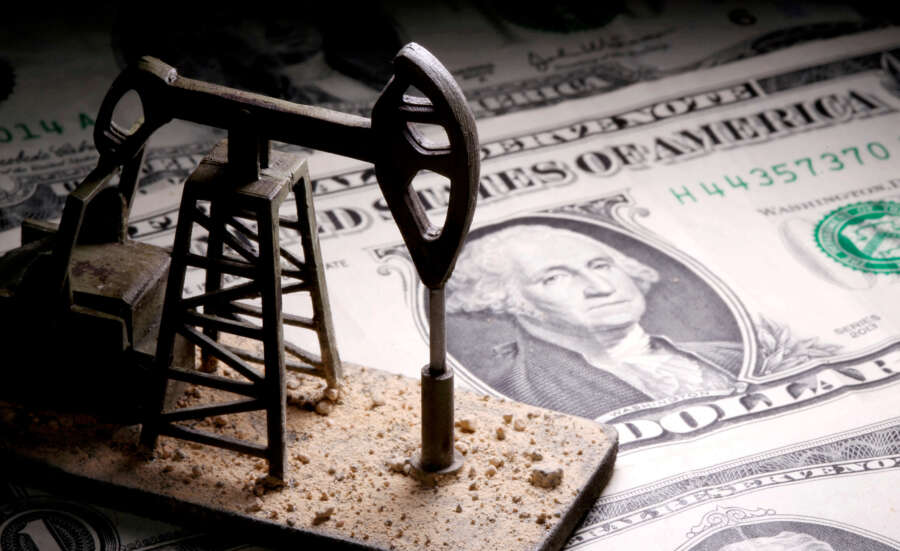
By Stephanie Kelly
NEW YORK (Reuters) – Oil prices rose about 2% on Tuesday on hopes that the Federal Reserve might ease up on its policy tightening after a key U.S. inflation report this week, though concerns remain over Chinese demand.
Brent crude futures settled up $1.43, or 1.7%, to $85.61 a barrel. U.S. West Texas Intermediate futures rose $1.79, or 2.2%, to $81.53 a barrel.
Investors were more optimistic that the U.S. Federal Reserve is getting closer to ending its cycle of interest rate hikes, making dollar-priced oil cheaper for buyers holding other currencies.
The prospect of the Fed raising its benchmark interest rate only once more and in a 25 basis point increment is a useful starting point but the central bank’s policy path will depend on incoming data, New York Fed President John Williams said on Tuesday.
A U.S. inflation report to be released on Wednesday is expected to help investors gauge the near-term trajectory for interest rates.
“The short-term crude demand outlook will soon be clearer. This week we will find out if the U.S. economy is taking steps into the recession pool or if it is going to do a cannonball into it,” said Edward Moya, senior analyst at OANDA.
Data from China, however, showed consumer inflation in March rose at its slowest pace since September 2021, suggesting demand weakness persists in an uneven economic recovery.
“China’s March CPI is lower than expected, which may promote the Chinese government to further stimulate the economy,” said Tina Teng, an analyst at CMC Markets.
Oil futures have climbed around 7% since the Organization of the Petroleum Exporting Countries (OPEC) and allies including Russia surprised the market last week with further cuts to production targets from May.
OPEC output will fall by 500,000 bpd in 2023, then rise by 1 million bpd in 2024, after the group’s output agreement expires, the Energy Information Administration forecast on Tuesday.
Total non-OPEC liquid fuels production is expected to grow by 1.9 million barrels per day (bpd) in 2023 and by 1 million bpd in 2024, the EIA said.
In France, the restart of the last of the four domestic refineries shuttered by a month-long strike signaled a likely boost to demand for oil.
On the U.S. supply front, industry data on U.S. crude stockpiles was due on Tuesday. The average estimate from five analysts polled by Reuters was that crude inventories fell by about 1.3 million barrels in the week to April 7.
(Reporting by Stephanie Kelly; Additional reporting by Noah Browning, Sudarshan Varadhan and Trixie Yap; Editing by David Goodman, David Holmes and Mark Heinrich)


